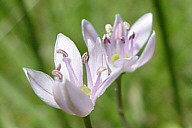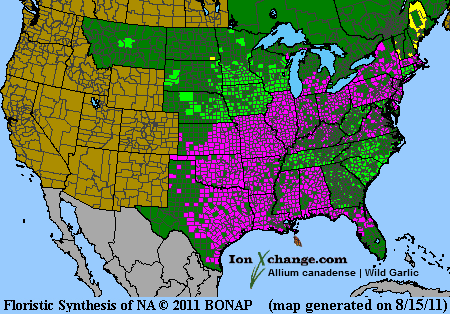 Loading... Please wait...
Loading... Please wait...- Home
- SEEDS
- SEED MIXES
- BUY PLANTS
- Info Request
-
Educational Videos
- Greenhouse Transplanting Demonstration
- Native Seed Cleaning demonstration at Ion Exchange Native Seed and Plant Nursery
- Attracting Butterflies
- Bidens - Bidens cernua Harvest Video
- Big Blue Stem Harvest
- Butterfly Milkweed Video
- Button Blazingstar - Liatris aspera Video
- Buttonbush - Cephalanthus occidentalis Video
- Canada Anemone - Anemone canadensis Harvest Video
- Cardinal Flower - Lobelia cardinalis Video
- Control Burn - Wildflower Field
- Cream Gentian - Gentiana flavida
- Culver's Root - Veronicastrum virginicum Video
- Cup Plant - Silphium perfoliatum Video
- Dormant Seeding | Planting
- Earthyman's Favorite Wildflowers Video
- Eco-Friendly Golf Course Seed Mix
- Floating Islands
- Fringed Loosestrife - Lysimachia ciliata Video
- Giant Yellow Hyssop - Agastache nepetoides Video
- Indiangrass - Sorghastrum nutans Video
- Iowa Prairie Partner Program
- Leadplant - Amorpha canescens (Potted) Video
- Meadow Blazingstar - Liatris ligulistylis
- Midland Shooting Stars - Dodecatheon meadii Video
- Native Plant Nursery Field Irrigation Experiment
- Nodding Onion - Allium cernuum Video
- Ohio spiderwort - Tradescantia ohiensis Video
- Old Man's Beard - Clematis virginiana blooms Video
- Oxeye Sunflower - Heliopsis helianthoides Video
- Prairie Spiderwort - Tradescantia bracteata
- Purple Coneflower - Echinacea purpurea Video
- Rain Garden or Water Garden Video
- Rattlesnake Master - Eryngium yuccifolium Video
- Riverbank Stabilization - Wetland Plants
- Rose Mallow - Hibiscus militaris Video
- Rosinweed - Silphium integrifolium Video
- Royal Catchfly - Silene regia
- Showy Tick Trefoil - Desmodium canadense Video
- Sneezeweed - Helenium autumnale Video
- Swamp Betony - Pedicularis lanceolata Video
- Swamp Milkweed - Asclepias incarnata Video
- Sweet Blackeyed Susan - Rudbeckia subtomentosa Video
- Tall Coreopsis - Coreopsis tripteris Video
- Urban Butterfly Garden
- Wild Bergamot - Monarda fistulosa Video
- Wild Geranium - Geranium maculatum Harvest
- Wild Goldenglow - Rudbeckia lanciniata Video
- Wild Petunia - Ruellia humilis Harvest Video
- Woodland Knotweed - Polygonum virginianum Video
- Yellow Coneflower - Ratibida pinnata Video
- Blog
- Resources
- Policies
Contact Us
Phone:
563-419-0837
or 563-535-7231
Email:
hbright@ionXchange.com
Browse Products
Add to Wish List
You Recently Viewed...
Our Newsletter
Product Description
Wild Garlic (Allium Canadense) is found throughout the tallgrass prairies in open woods and thickets. White to pink flowers bloom from May to July and it can grow as high as two feet. The long, grass-like leaves can reach 18 inches in length. The leaves are flat on one side and just slightly convex on the other. This species differs from other Allium species in that the leaves are not hollow. Tolerates all conditions well; very hearty plant. Does extremely well on it's own when established. Deer Resistant.
Hummingbirds, butterflies and bees are attracted to Wild Garlic while rabbits and deer tend to avoid eating all the Allium species due to the onion scent and the spicy taste of the foliage.
Wild Garlic plants are dormant in the summer and will emerge again later in the season when the air temperatures start to cool. Please plant the shipped bulbs which will still be alive even if tossed out of the tray, mark the area and watch for them to send up new growth toward end of summer!
Liliaceae Family - "Wild Garlic, Meadow Garlic, Wild Onion, Wild Shallot"
Allium is the ancient Latin name for garlic and canadense is the Latin word meaning "of Canada".
| Sun Exposure | Savanna, Prairie, Woodland |
| Soil Moisture | Wet Mesic, Mesic, Dry Mesic, Dry |
| Bloom Time | Spring, Early Summer May, June, July |
| Bloom Color | Pink |
| Max. Height | 18 inches |
| Wetland Code | FACU |
| Germ Code | A |
| Seeds Per Packet | 85 |
| Seeds Per Ounce | 560 |
The Allium genus has been widely used as food and medicine for thousands of years. The medicinal effects of many of the species are the same, but the strengths of those properties vary from species to species. In many cases, they were used as emergency survival foods; in winter, the seed heads of some the species remain through the snowfall and their presence above the snow indicated edible bulbs below. Several stories from the journals of early explorers recount how wild onions or wild garlic saved the parties from starvation and scurvy.
Wild Garlic is one of the most powerful herbs of the Natural World and was widely known and utilized by both Native Americans and early settlers. The juices of the plant were often applied directly to wounds and burns. Some Native American tribes crushed the bulbs of wild garlic and used them in a poultice for treating boils. Others found the poultice provided relief from bee stings and insect bites and snakebites. Early pioneers used wild garlic as a substitute for the widely used onion poultice.
The bulbs were sliced and cooked (by both Native Americans and early pioneers) with the resulting liquid being used to dissolve maple sugar and make a cough syrup. The same mixture was also used to treat hives. Some of the other medicinal uses by settlers were for the treatment of fevers, skin problems, hemorrhoids, earaches, rheumatism, arthritis, tapeworms and other internal parasites, blood disorders and lung problems.
The physician who accompanied Lewis and Clark made note of the use of Allium canadense to control scurvy among the members of the exploration team. In the journals of the journey of Father Marquette here in our area, wild garlic was mentioned as an important source of food.
Edible Uses:
Bulb: Raw or cooked. It can be used as a vegetable, or as a flavouring in soups and stews, and can also be pickled. The bulb is up to 30mm in diameter, it is crisp, mild and with a pleasant flavour. Used as a leek substitute according to one report, it is a garlic substitute according to others.
Leaves: Raw or cooked. A delicious mild flavour, they are available from early spring until the autumn. They make a very acceptable salad and can also be used as a greens or as a flavouring in cooked food.
Flowers: Raw. A little bit stronger flavour than the leaves, especially as the seeds begin to form, they can be used as a flavouring and garnish on salads.
Some forms of this species produce bulbils. These top-setting bulbils make a fine onion flavoured pickle. They are said to have a superior flavour to other pickled onions.
Medicinal Uses:
The plant is antiasthmatic, carminative, cathartic, diuretic, expectorant and stimulant. A tincture is used to prevent worms and colic in children, and also as a remedy for croup. Although no other specific mention of medicinal uses has been seen for this species, members of this genus are in general very healthy additions to the diet. They contain sulphur compounds (which give them their onion flavour) and when added to the diet on a regular basis they help reduce blood cholesterol levels, act as a tonic to the digestive system and also tonify the circulatory system."
Other Uses:
The juice of the plant is used as a moth repellent. The whole plant is said to repel insects and moles. The plant can be rubbed on exposed parts of the body to protect them from insect bites and the bites of scorpions, lizards etc.












